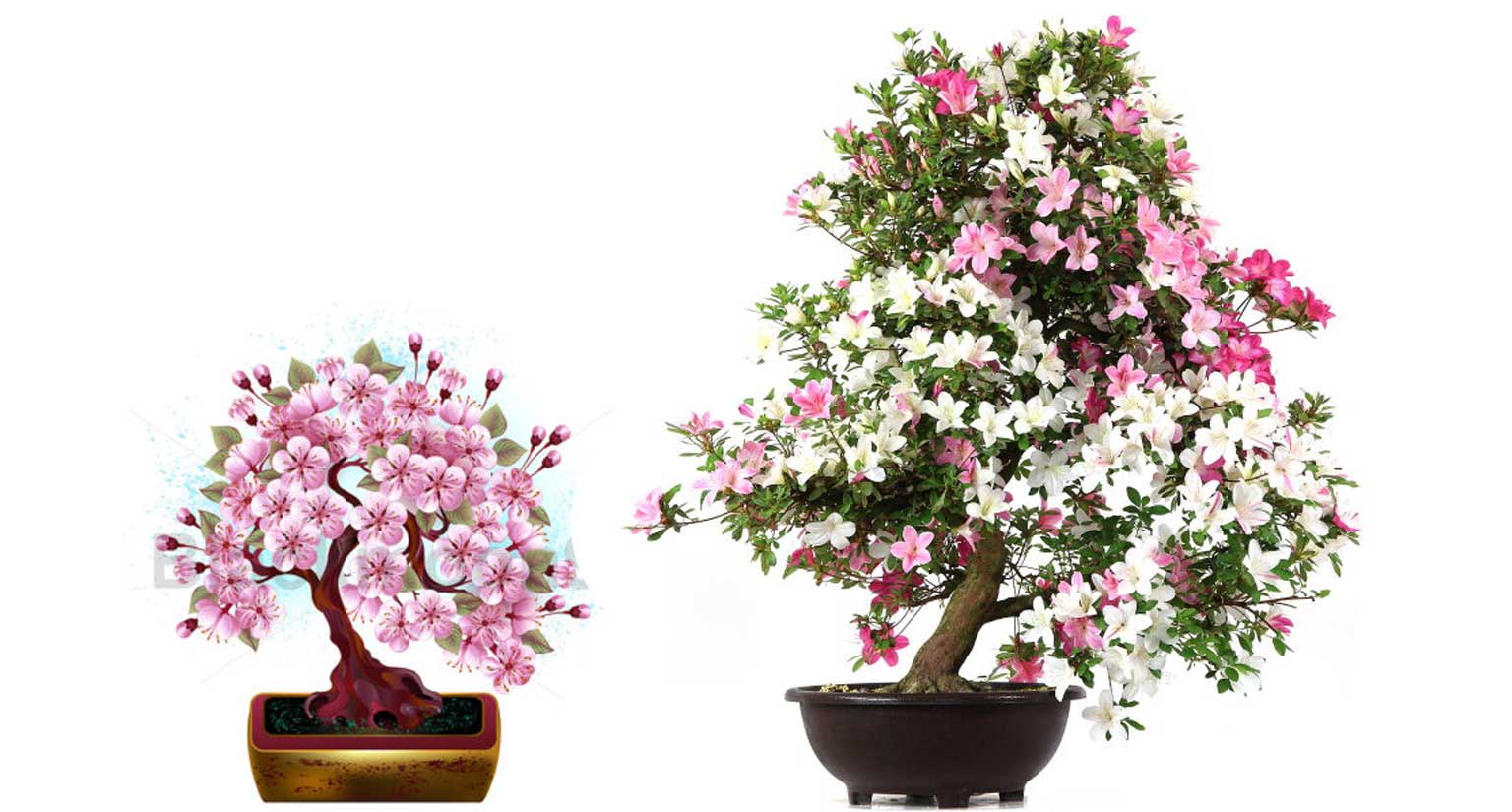One of the greatest joys of cultivating bonsai is witnessing these miniaturized trees come to life with cascades of colorful blooms. But the flowering habits of different bonsai species vary. Understanding when your bonsai trees bloom depends on their type and growth cycle. With proper care you can enjoy bonsai flowers year-round!
Spring Bloomers Burst with Vibrant Flowers
Spring is the most prolific season for bonsai flowering Many popular species put on shows of brightly hued blooms as temperatures warm
Flowering cherries, like sakura, are famed for their puffy pink and white blossoms in early spring. Maples also awaken with vivid tones from bright yellow to bold red depending on variety.
Azaleas ignite in blazing displays ranging from white to coral to fuchsia. Their abundant blooms can completely cover the branches. Other spring favorites are wisteria, camellia, gardenia, and rhododendron.
To get the most flowers, ensure spring bloomers are placed in full sun and kept moist. Prune immediately after blooming finishes to promote next year’s flowers. Fertilize with a balanced formula as buds start to emerge.
Summer Sizzles with Hot Color
While spring takes the crown for volume of flowers, summer brings sizzling pops of tropical colors from hardy bloomers.
Bougainvillea competes with azalea in its neon blast of color. The tiny flowers crammed into vibrant bracts come in red, orange, pink, purple, and more. Other tropicals like jasmine and hibiscus add bold, exotic flowers in summer.
Trees like crepe myrtle and vitex burst with lavender blooms when temperatures peak. The flowers contrast beautifully with the dark green foliage. Don’t forget succulents – many sculptural desert plants produce dainty colored blooms when their growing conditions are ideal in summer.
Autumn Offers Subtle Flowering Charm
As summer fades into fall, the flowers take on a more muted elegance. Trees like Japanese maple offer a final floral hurrah at summer’s end. Their delicate blooms in red, orange, or yellow match the changing leaf colors.
Other trees you may see flower in autumn are crabapple, quince, and Chinese pistache. Their blooms are smaller compared to spring, but add graceful accent colors against the autumn foliage.
Hardy sedums and chrysanthemums give a final burst of color too, often blooming up until frost. Place autumn-flowering bonsai where they can bask in ample sunlight to encourage any late-season blooms.
Evergreen Flower Power in Winter
Evergreen conifers and some woody plants provide a surprising amount of winter flowers. Trees like pine and juniper produce their tiny cones during the colder months.
Flowering quince dazzles with neon blooms even in frost and snow. Witch hazel flowers burst open on bare branches in late winter, their fragrant yellow blossoms defying the cold.
To boost flowers on evergreens, give them full sun and protect from harsh winds. Water more sparingly in winter but don’t let soil totally dry out. Cover pots if temperatures drop below freezing.
Tips for Maximizing Flowers on Your Bonsai
Here are some key tips to encourage prolific flowering:
-
Give bonsai adequate sunlight – most flower best in full sun locations. Turn pots periodically for even light exposure.
-
Use fertilizer formulated for blooming plants, higher in phosphorus and potassium. Apply regularly during active growth.
-
Prune at the right time for each species to avoid removing next year’s flower buds.
-
Water properly and keep bonsai from drying out for best growth and flowering.
-
Protect from severe temperature shifts and wind exposure. Move pots to a sheltered area if needed.
-
For dioecious species, ensure both male and female plants are nearby for pollination. Assist pollination using a small brush if needed.
-
Remove spent flowers promptly once they fade to encourage continued blooming. Pinch off developing seed pods too.
Extend Flowering Seasons With Thoughtful Bonsai Care
One of the keys to enjoying flowers over multiple seasons is selecting bonsai trees with varying bloom times. With the right mix of early spring, late spring, summer, fall and winter bloomers, you can create a nonstop floral display.
Pay close attention to the specific care needs of each bonsai variety. By tuning into the growth habits and bloom seasons of your trees, you can help them put on their best floral show during the times of year when they naturally flower. With stellar care and ideal conditions, bonsai flowers will flourish across all four seasons!
When Do Chinese Elm Trees Bloom?
FAQ
What season are bonsai trees pink?
How do I get my bonsai to flower?
Do bonsai trees have seasons?
Do bonsai trees bloom during the summer?
Most bonsai trees bloom in the spring and summer. You can grow these plants in different shapes and sizes. If you want the flower to look beautiful and healthy, keep your bonsai outside to provide plenty of sunlight.
Are bonsai trees flowering?
Bonsai trees can bloom and bear fruit, just like normal flowering and fruit-bearing trees. In this article, I will talk about flowering bonsai.
How to prevent a bonsai tree from blooming?
To prevent a bonsai tree from blooming, you have to prune it in the fall or winter, right before spring. Cut off the flower buds so the bonsai will not bloom in the coming spring or summer. Now, you may wonder why it is sometimes necessary to prevent the blooming. There are different styles of bonsai trees.
What are the most beautiful flowering bonsai trees?
In this article, we’ve listed the top 22 most beautiful flowering bonsai trees. Generally, you treat and style flowering species just like other bonsai trees: they require the right amount of sunlight, should only be pruned after blooming, and need low-nitrogen fertilizer. One well-known example of flowering bonsai is the Azalea, a common choice.
- A Complete Guide to Caring for Yuki Cherry Blossom Shrub - January 23, 2025
- Identifying Red Hot Poker Seeds: What to Look For When Harvesting Torch Lily Pods - January 23, 2025
- A Complete Guide to Harvesting Evening Primrose Seeds - January 23, 2025

